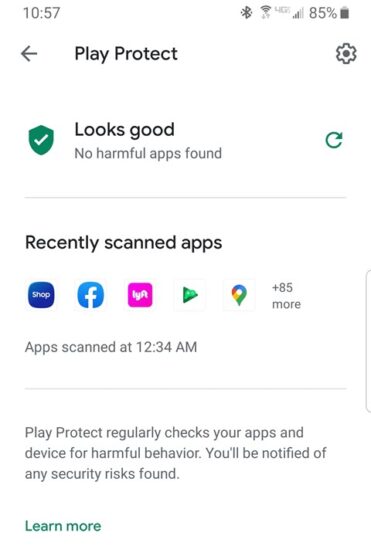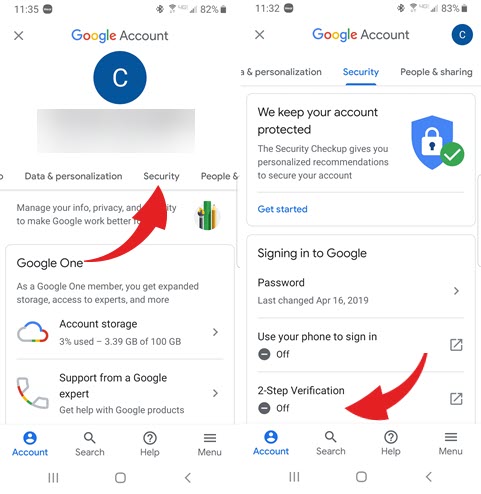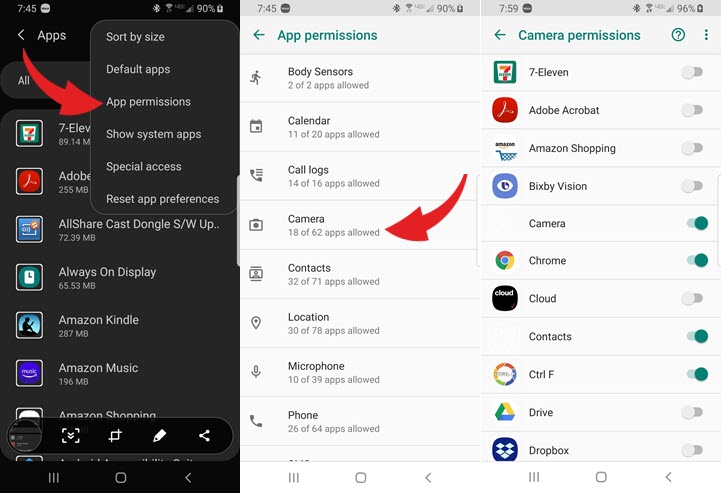7 essential Android security settings: 2FA, spot shady apps, stop location tracking

According to a Pew Research report, 28% of smartphone owners don’t use screen locks or other security features to keep people out of their phones. Does this figure represent your Android security practice?
The same report further indicates 54% of internet users access the web via public Wi-Fi networks to perform sensitive activities, such as online shopping (21%) and banking (21%). Never access public Wi-Fi without a virtual private network. Tap or click to see how you can protect your data with a VPN.
Connecting to public Wi-Fi makes it easy for cybercriminals to access your device and steal your personal information. Once breached, your data, identity or even your Android operating system will be up for grabs. To avoid this, all you need to do is utilize some precautionary measures — like using a passcode.
Note: Instructions in this article may vary according to Android model, manufacturer and operating system.
1. Set up a passcode
An easy and straightforward way to protect your Android is with a password, pattern or PIN (passcode). To set up a lock screen password, open Settings on your device. Tap Lock screen. Some devices will display Security or Security and Screen Lock.
Tap Screen lock type and select the option you would like to use, PIN, Pattern or Password. Do not use the (default) Swipe option because it provides zero protection for your smartphone. Follow the prompts to set up your desired lock.
Remember, strong passwords protect your device and data. Tap or click to discover the five new rules for creating the best passwords.
To strengthen your line of defense, utilize Smart Lock. You must have a screen lock set up before you can use Smart Lock. Go into Settings and select Smart Lock. Enter your password, PIN or pattern. Choose any number of the three options: On-body detection, Trusted places or Trusted devices.
With the On-body detection feature enabled, your Android will remain unlocked while it’s on your person and in motion. When you set the device down, it will lock.
Note: On-body protection cannot discern between you and another person. If someone takes your device while it’s unlocked, they can gain access.
Trusted places requires you to turn on your Android Location setting, which allows your phone to remain unlocked while at specified locations, such as your home.
Trusted devices allows your Android to be unlocked when connected to another device, such as wearables, Bluetooth speakers or even your vehicle.
2. Find My Device
With the Find My Device app, you can locate your phone if you lose it. Tap or click here for 5 clever ways to find your lost Android. Once the app is installed, go into your device Settings and select Biometrics and Security. Tap Find My Device and toggle On. You must also ensure Location is enabled.

Check that Google Play visibility is on by opening: https://play.google.com/settings/. Under Visibility, check your device. As a final step, make sure you can find your device by visiting Google. Sign in to your Google Account to see which devices are available.
3. Google Play Protect
This Android feature is enabled by default and is a real-time malware scanner that monitors every app you installed on your smartphone, along with any application you are about to install.
To confirm it is enabled, open Settings and tap Biometrics and Security. Under Security, click Google Play Protect. Google will present you with a short report of your system’s apps.

4. Two-factor authentication
To add an extra layer of security to your smartphone, consider utilizing two-factor authentication (2FA)or two-step verification. You can use this sign-in method on any of your accounts, including Google. Tap or click here for in-depth details on 2FA.
To set it up, go into your device Settings and select Google. Tap Manage your Google Account.

Scroll through the menu under your email and click Security. Choose 2-Step Verification, open browser (not Chrome). Tap Get Started and follow the steps on the screen.

5. Lockdown mode
If your Android runs Android 9 Pie, Lockdown Mode will lock your device from all Smart Lock and biometric security options. This feature requires you to use either a PIN, pattern or password to unlock your Android.
Why would you want to use this technique? Because Lockdown Mode overrides other lock features like biometrics, so someone (criminal or law enforcement) who forces you to unlock your smartphone with your fingerprint or face still can’t access your Android without your consent.
After initiated, Lockdown Mode will not display any notifications and your phone will remain locked (even if restarted) until you manually unlock the device.
To enable this feature, open Settings and select Lock Screen. Tap Secure lock settings and enter your PIN, pattern or password. Tap Show Lockdown option to enable the feature.
Use this mode from your lock screen whenever you feel it’s necessary. Merely press and hold down the power button for a few seconds. You will observe your power menu, including the option for Lockdown, tap the icon and your phone is secured.
6. App permissions
When you download a new app, it’s easy to hit “accept” without reading any of the fine print; however, this habit grants apps access to an abundance of info. Thanks to app permissions, the social media giant was able to monitor and log user calls and messages.
One way to help avoid this consented overreach, check through your app permissions from time to time to see what permissions your applications have.
To check, open Settings and select Apps. Click the three-dot menu in the upper right corner and choose App permissions. Choose any app to view which secondary apps or services your selected application uses.

Some apps don’t ask before taking your data. Tap or click to reveal the dangerous apps you should delete now because they are stealing your personal data.
7. Review location settings
Don’t forget about your location settings. Once you agree to share your whereabouts, apps can gather a hoard of location data, including your home address and where you work, shop or go to school. These intimate details are then used to create targeted advertisements.
Although certain apps such as the Find My Phone require Location to be enabled, other applications, such as those for shopping, social media and camera, don’t.
To review your settings, launch Settings and select Biometrics and security. Scroll down to Privacy and toggle Location on. Once enabled, tap Location again to view which apps recently requested your location and location services. Select any you wish to adjust.
Use any one of these techniques, or go for greater safeguarding with all seven. Either way, you, your data and your device are better protected than if you choose not to take any security measures.
Tags: Android, cybercriminals, Find My Device, Google Play Protect, lockdown, malware, operating systems, passcode, public Wi-Fi, screen lock, security features, Smart Lock, two-factor authentication, virtual private network
